My wonderfully named e-buddy Martin Bentley recently took a field trip to a quarry in South Africa (between Grahamstown and Fort Beaufort) where the Dwyka Formation is exposed:
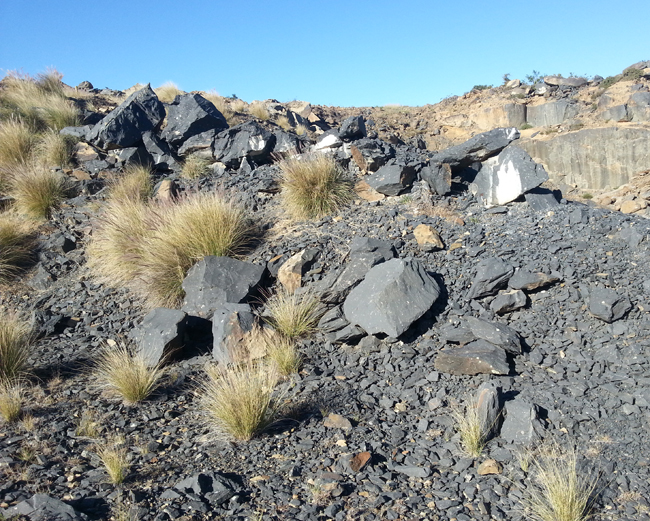
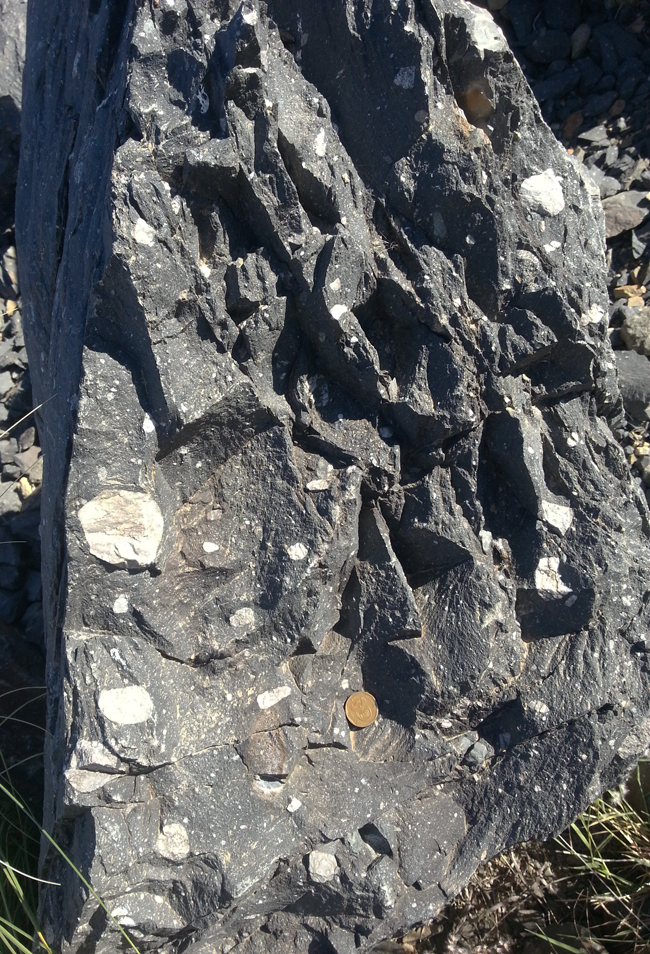
This poorly sorted sedimentary rock (a ‘diamictite’) is usually interpreted as glacial deposits (lithified till, or ’tillite’).
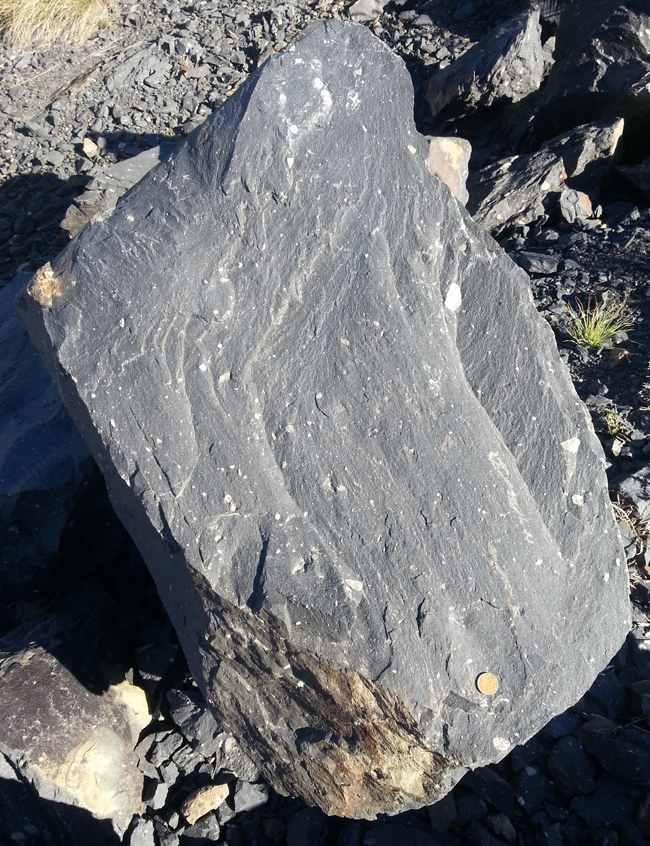
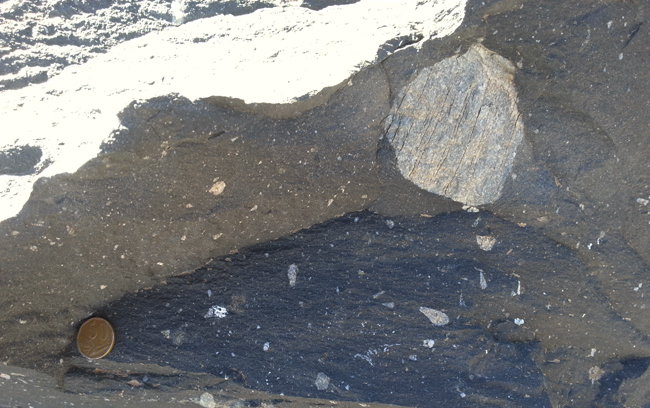
Alfred Wegener cited these rocks and accompanying glacial striations (and similar ones in South Africa, India, Australia, and Antarctica) as evidence for the existence of Gondwana, the southern supercontinent of the late Paleozoic.
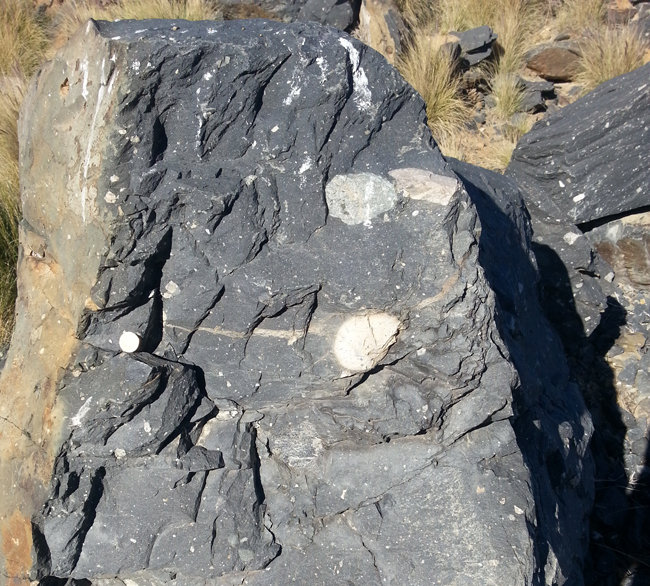
And Martin collected me some samples!
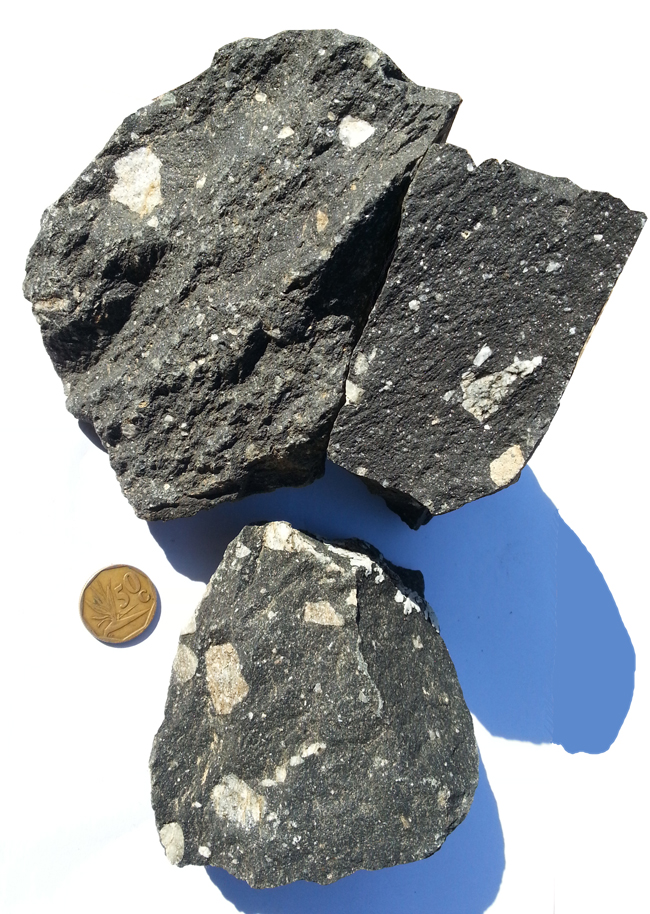
NOVA students will soon be examining these samples both in-hand and via the digital medium of the macro-GigaPan, to learn about glaciation, tillite, and the initial evidence put forward in support of continental drift.

I am surprised to have learnt that there are still people in this modern world do not accept continental drift or plate tectonic as a fact.
Great photos Callen! My favorite reference for the depositional setting of the Dwyka is Visser, Colliston and Terblanche (1984) Journal of Sedimentary Research. Visser spent decades trying to get rid of the word “tillite” for the Dwyka because it is subaqueous (glaciomarine) but it has persisted in some more recent work. I suppose true “tillite” (as in, lithified continental till) must be a rare thing indeed since it is subject to so much reworking.
Hi Christie, glad that you liked the photos. 🙂
Regarding your comments re: tillite, I know that at university we always referred to the Dwyka Group as tillite (although there are some shales, these are more common in the northern edge of the Karoo Basin, not the south near Grahamstown). I suspect that the term is too entrenched to be easily changed now, even if it is inaccurate. No one seems to be arguing the glaciomarine depositional setting though.
I studied Geology at Rhodes under Prof Eddie Mountain some 60 years aga. I remember that they had an extensive collection of fossils from this area. I wonder if they still exist?
Why are the Dwyka evidences characterized as effects consequential to glaciation (a relatively “long” process), rather than those effects consequential to marine landslides (a relatively “short” process), when both glaciation and catastrophic displacement (“flows”) of sediment share ‘diagnostic’ features? Are there lynchpin evidences specific to glaciation?
Lynchpin lines of evidence include shape of the outsized clasts – faceted surfaces bearing striations, as well as dropstones (derived from icebergs) in finely laminated sediments. Neither of those would originate via landslide. These photos don’t show the latter characteristic at all, and there are no obvious examples of the first characteristic here either. But this is just a handful of photos from one site.